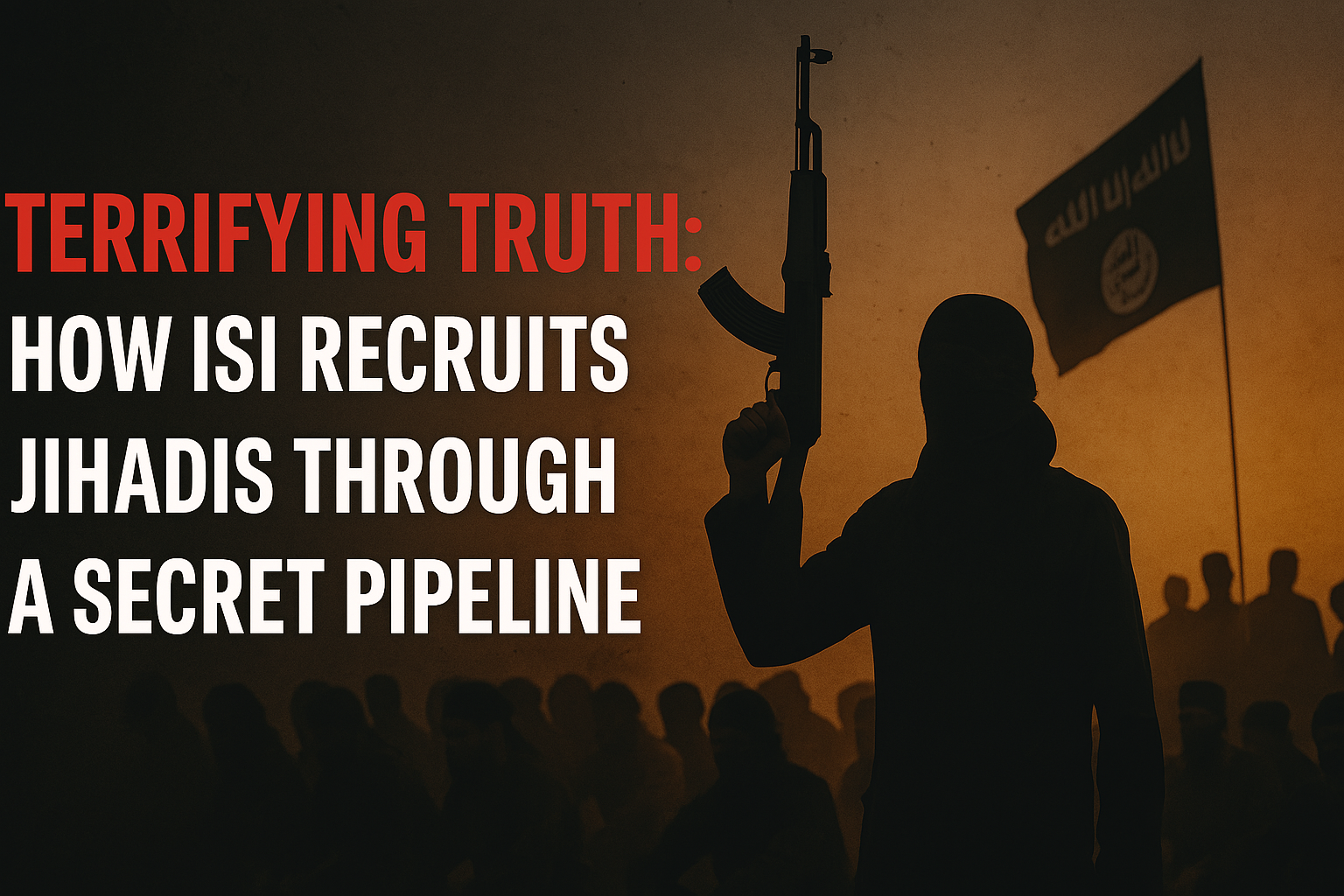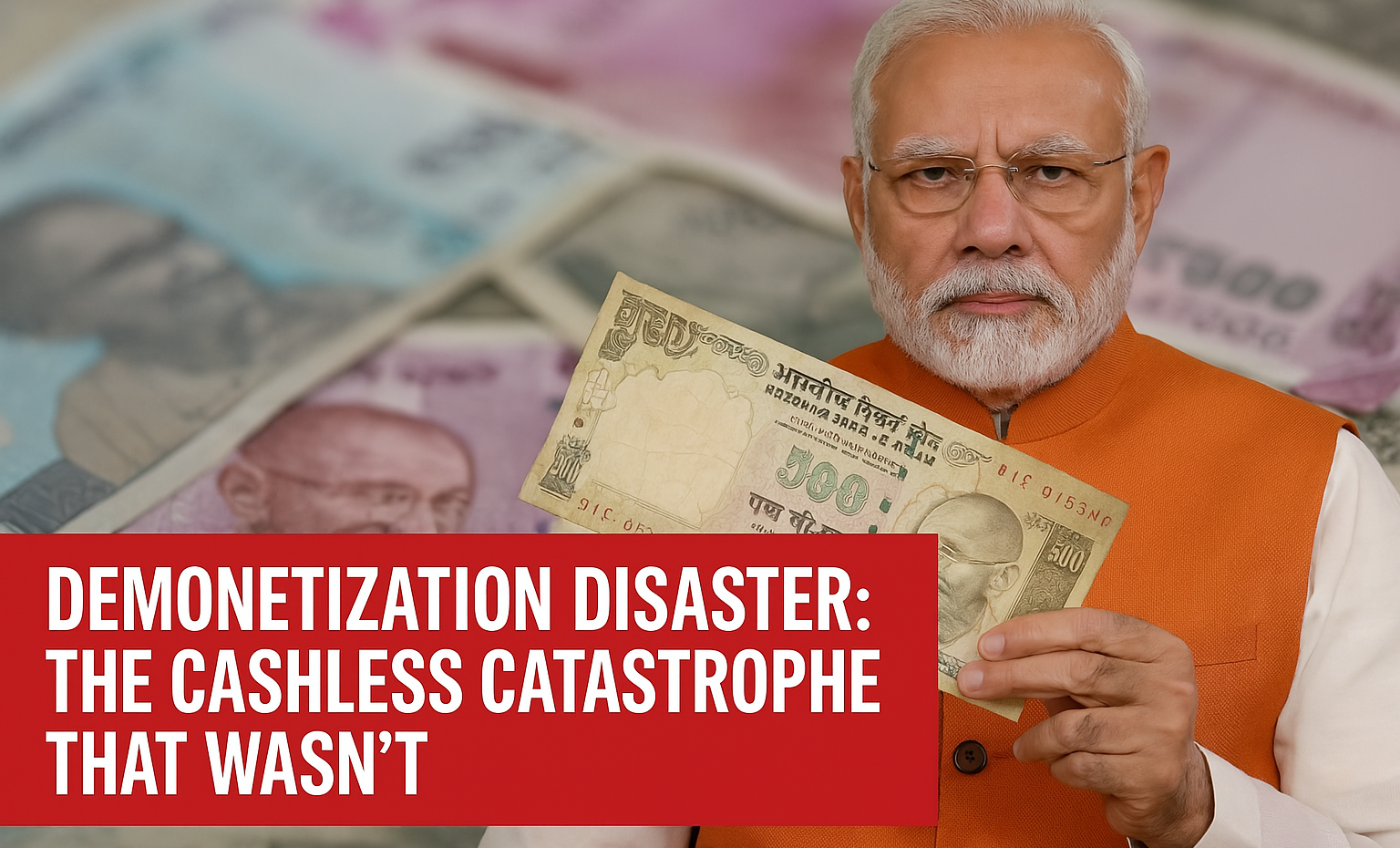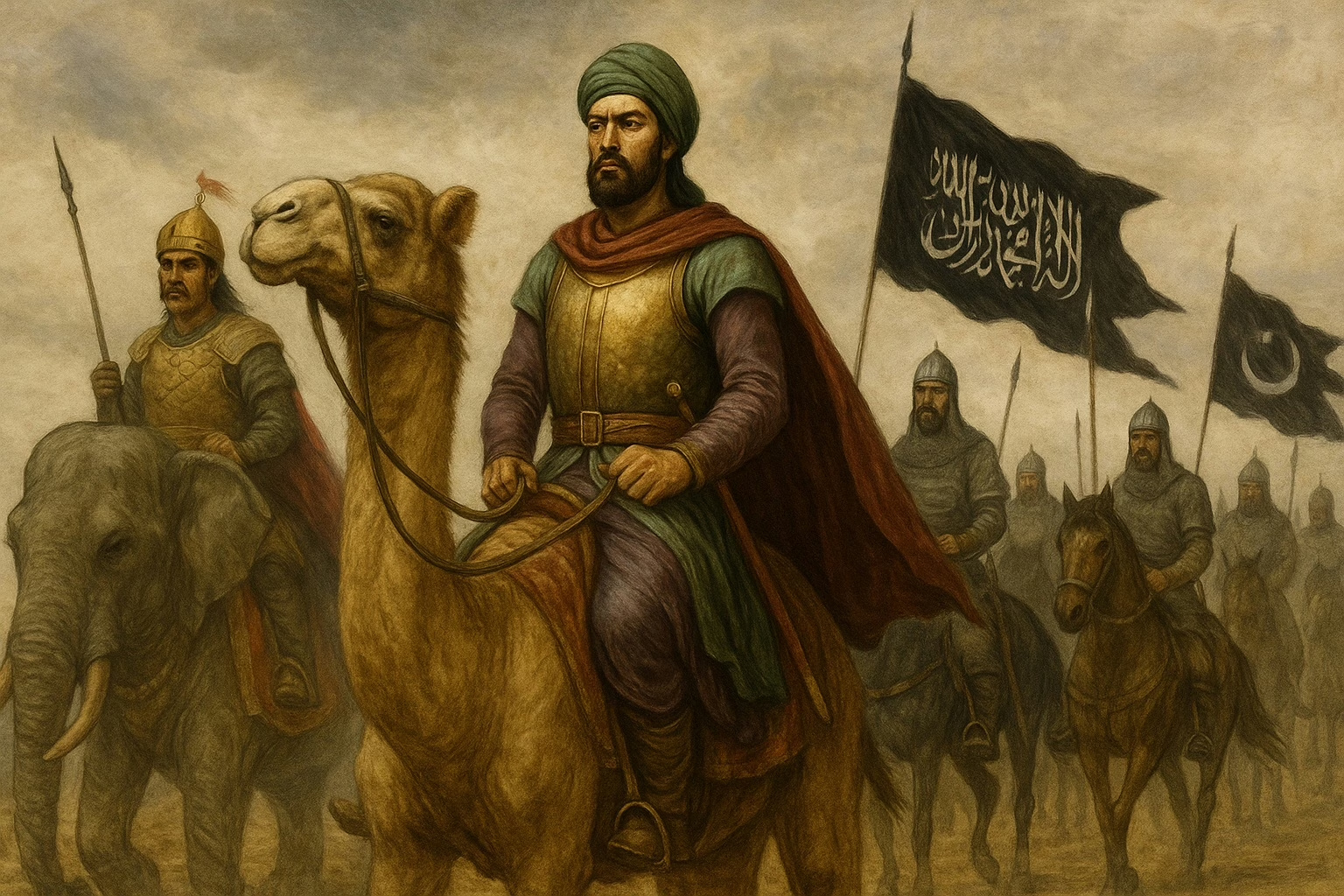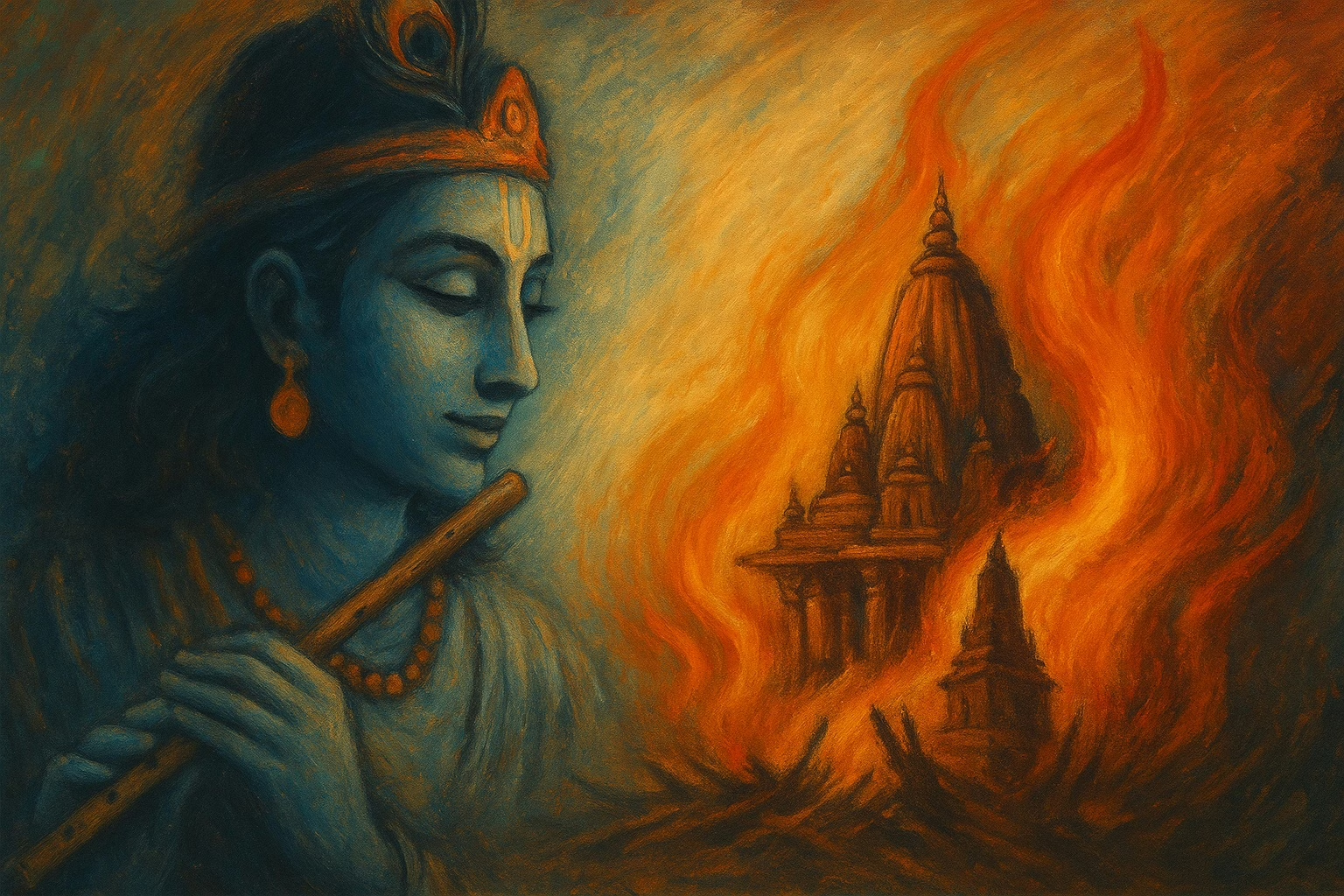Introduction: A City Meant for Prayer Was Offered to Fire
In the winter of 1018 CE, the sacred city of Mathura, cradle of Krishna’s birth and jewel of Indian civilization, met its nightmare. It wasn’t disease. It wasn’t drought. It was Mahmud of Ghazni—the poster boy of plunder posing as a paladin of faith.
Mahmud’s most devastating raid wasn’t just about wealth. It was about breaking the spine of a civilization—its temples, its culture, its memory.
Textbooks may reduce this to a one-liner. But the people of Mathura remembered. And they still do.
Mathura Before the Flames
Before the fires consumed her, Mathura was more than a city.
She was a spiritual nerve center, revered for centuries. With hundreds of temples, massive public halls, libraries, and pilgrimage festivals that attracted people from all over India, Mathura was a symbol of continuity and devotion.
R.C. Majumdar describes her as:
“The heart of India’s spiritual map… a place where every stone echoed divinity.”
— The History and Culture of the Indian People, Vol. 3
This made her rich—not just in wealth, but in symbolism.
And that’s what Mahmud came for.
The Arrival of Mahmud: Sword in Hand, Allah on His Lips
Mahmud of Ghazni had already carved out a reputation as Islam’s favorite looter. His earlier attacks on Thanesar, Mathura, and Somnath had turned bloodshed into an annual business.
But Mathura was special.
- The temples glowed with gold.
- The sanctum of Lord Krishna shimmered with silver.
- And the city was largely undefended, with spiritual leaders in place of swordsmen.
Al-Utbi in Tarikh-i-Yamini gleefully recorded:
“The city was filled with idols of gold and silver. Each house had a temple.”
Mahmud saw temples not as sacred structures—but as banks wearing bells.
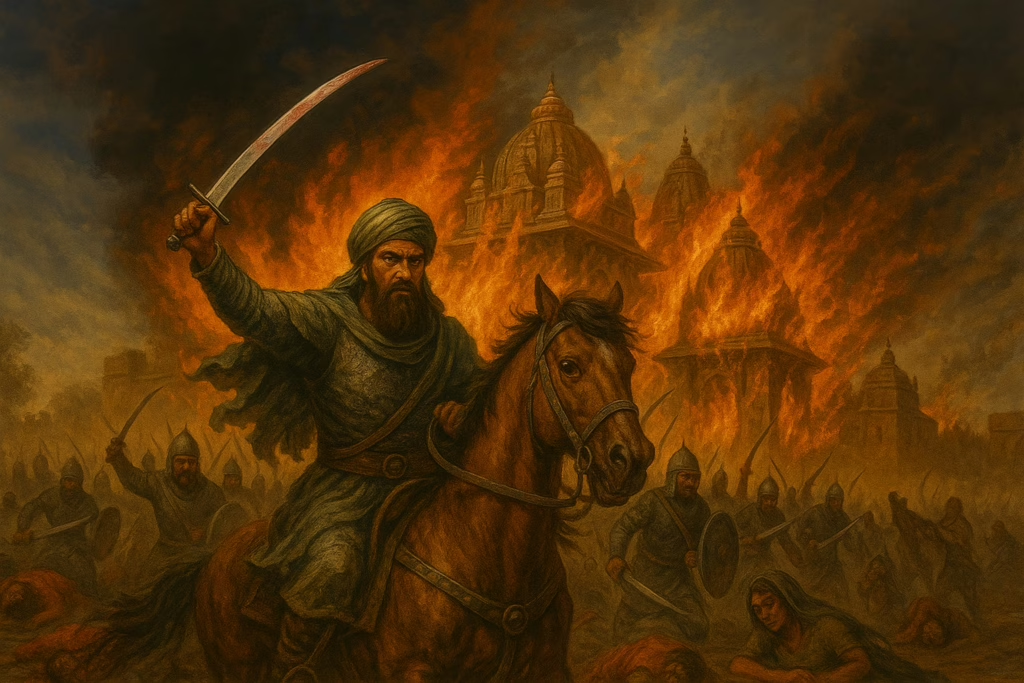
Mahmud’s Most Devastating Raid Begins
What happened next wasn’t war. It was annihilation.
Mahmud’s forces entered Mathura like desert fire. According to Tarikh-i-Yamini, he was astonished by the wealth but gave no orders to preserve it.
- He looted every temple.
- Melted idols in public.
- Pulled down ancient sanctums that had stood for a thousand years.
- Burned the grand Vishnu temple said to house over 5 tonnes of gold.
- Slaughtered Brahmins who refused to flee.
Al-Utbi brags:
“The city was so wealthy that it took 100 camels just to carry the loot.”
What he didn’t take in treasure, he torched. Temples became ash. Idols became cannonballs.
Women, Children, and the Weight of Survival
Temples were not the only things desecrated. The human toll was unimaginable.
- Priests were killed mid-prayer.
- Women were taken as sex slaves.
- Children were sold in markets from Ghazni to Persia.
Will Durant later wrote:
“The Islamic conquest of India is probably the bloodiest story in history.”
And Mathura? It was the opening scene of that horror movie.
What About Resistance?
To be fair, there was some resistance.
Small Rajput groups attempted to defend nearby forts.
Local people tried to hide idols and women.
But without a standing army or advance warning, Mathura stood no chance.
In fact, Mahmud timed his raid when he knew northern India was politically fragmented—a patchwork of kingdoms arguing about territory while a religious hurricane approached from the northwest.
This wasn’t just poor strategy. It was civilizational complacency.
Why Mahmud’s Most Devastating Raid Mattered More Than Gold
Yes, he walked away with millions in gold and silver.
But what Mahmud really achieved was psychological supremacy.
- He proved no city was sacred enough to be spared.
- He showed that faith without a sword was prey.
- He left behind a smoking crater in India’s cultural heart.
And he bragged about it.
“I razed Mathura to the ground so thoroughly, not a trace remained.”
— paraphrased from Al-Utbi’s Tarikh-i-Yamini
Historical Sources that Document the Horror
📘 Tarikh-i-Yamini by Al-Utbi
Official Ghaznavid chronicle, glorifies Mahmud’s raids and records Mathura’s wealth and destruction.
📗 The History and Culture of the Indian People by R.C. Majumdar
Gives a blunt assessment of Mahmud’s motivation and the irreversible damage.
📙 The Story of Civilization by Will Durant
Highlights the ideological and civilizational brutality of Mahmud’s campaigns.
What Mahmud Left Behind: Not Just Ashes, But Echoes
After the raid, Mathura’s temples were rubble. Its libraries were dust. Its society—broken.
But the story didn’t end there.
- Survivors fled to other cities.
- Bhakti poets later reclaimed Mathura’s soul through verses.
- Krishna’s legacy moved from stone temples to living hearts.
The physical city was desecrated, but the spiritual resistance had just begun.
Final Thoughts: Mahmud’s Most Devastating Raid Wasn’t the Last—It Was the Blueprint
If you think Mahmud’s attack on Mathura was just about loot, think again. It was a manual for future invaders. A checklist.
- Break their gods.
- Burn their books.
- Humiliate their women.
- Crush their confidence.
Every subsequent invader—from Ghori to Babur—followed Mahmud’s lead.
But Mathura?
It rebuilt. Again. And again.
Because India doesn’t forget.
And what’s sacred doesn’t die—it returns, louder than ever.






